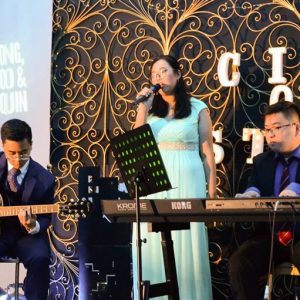Saturday, half past noon. It was one of those days best spent indoors. The air felt heavy on the skin, and the post-lunch urge for sweet siesta caused most to drag their limbs throughout the rest of the humid afternoon. The designated venue for a journalism workshop was empty still. Empty, save for the man sitting behind the teacher’s desk. He was in a long-sleeved, plain white dress shirt tucked at the waist—composed despite the heat.
The man flashed a smile. “Good afternoon,” he said, with a warmth not often found on people’s faces under such conditions.
For the man of the hour, Wilson Lee Flores, the beginning started at Ateneo. And what was a winding path would lead him to become the decorated business man that he is today—a multi-awarded writer, having won 3 Palanca awards, authoring 5 books, and regularly imparting his opinions via a column on the Philippine Star. He is also college professor, a real estate entrepreneur, and a bakery owner. Right now, however, the spotlight is trained on this one achievement which may arguably be the first domino in the line: Wilson Lee Flores founded Celadon.
He laughed at the recollection of his own college antics. “It’s a very funny story,” he says, prefacing, before regaling me with his answer as to how the organization was founded and the crucial role he played in ensuring it. With the big, bright smile on his face never waning, he asked me, “Do you still have Citizen Military Training?”
In 1985, college students around the Philippines were required to attend Citizen Military Training. The mandatory Saturdays were composed of drills and exercises patterned after the program for army training. College student Wilson Lee Flores wanted to spare himself from that. After securing a note from a well-meaning doctor, Wilson was assigned to what he calls “the light duty section,” where students were tasked to participate in lectures.
In that fateful group of people, the idea that would eventually materialize into Ateneo Celadon was ignited and fanned by those who believed in it. These were his peers whom he met on those fateful Saturdays. “I discovered and gained new friends,” Wilson Flores said, the memory still tangible. “Among them were fellow ethnic Chinese students from different schools of Metro Manila, Cebu, Iloilo, Davao and other places.”
This gave Mr. Flores the inspiration needed to start planting the seeds he would later on harvest. He motioned for such an organization to exist and blossom in the Ateneo landscape. As a writer and editor for the Guidon, the official student publication of the university, Mr. Flores started writing about his vision even before the organization was officially approved—an undoubtable testament to his ambition.
I believe the Ateneo de Manila University community as a whole can immeasurably be enriched with such an organization which promotes Chinese culture and Confucian values
When asked why he found it necessary for an organization such as Celadon to have a presence in the Ateneo, he answered simply, “I believe the Ateneo de Manila University community as a whole can immeasurably be enriched with such an organization which promotes Chinese culture and Confucian values… The unity of ethnic Chinese students in this group can also be galvanized into a positive force to pool talents, energies, and ideas for undertaking positive civic and cultural projects.”
Mr. Flores was looking outward, beyond the organization, and endeavored to build a Celadon whose presence ignited a positive force in and for the whole Ateneo community.
“I hope Celadon shall continue to benefit its members as well as help contribute to the Ateneo as a whole with Chinese culture and Confucian values, that it shall continue to strengthen its great traditions of excellence, discipline, fun and service.” He hoped for a Celadon that would forever live up to its name.
And this name carries weight. More so than a badge of honor, it is a duty, it is a symbol that encapsulates the grand vision Mr. Flores had for the organization and its members.
“Well,” he started, “At the entrance of the old Rizal Library, there were glass displays of old celadon wares…” And beneath the displays, according to him, there was a label which said “Ancient Chinese Celadon Wares Unearthed in Batangas.”
Chinese in the Philippines? He asked himself. There certainly was a symbolical ring to it—a classic metaphor for those imbibing both cultures in equal measure. Moreover, these celadon wares—being an ancient kind of jade porcelain created by China’s master artisans after years of refinement—was a symbol of discipline and excellence. Culture, history, art, discipline and excellence—all of it molded in the shape of these gleaming jade pots called celadon.
“Celadon,” Wilson Lee Flores whispered to himself. “That’s the name.”
Written by Chynna Ramos. Originaly printed in Volume 15, Issue 1, March 2016.




